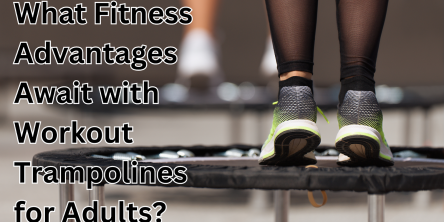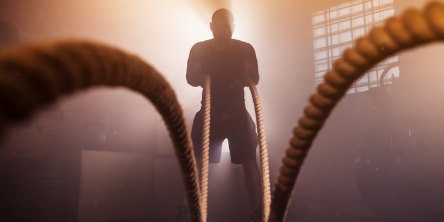9 Most Common Sports Injuries – Prevention and Treatment Tips

Physical activity has many benefits, from improving mood and boosting energy to promoting better sleep all the way to combating various health conditions and diseases. This is why it is recommended that adults get at least 150 minutes of physical activity per week. Luckily, with running, cycling, weightlifting, basketball and plenty of other sports, there are so many different kinds of activities one can choose from.
However, when working out, staying safe is a priority as there are, unfortunately, many different sports injuries that can occur if one is not being careful. Listed below are some of the most common sports injuries as well as prevention and treatment tips, so keep on reading to familiarize yourself.
Concussion
A concussion is an injury that has to be taken seriously as it is an injury to the brain, most usually due to a blow, bump or jolt to the head. Dizziness, confusion, disorientation, headache and nausea are all symptoms one might experience if they have a concussion, as well as slurred speech, sensitivity to light and delayed responses to questions. Contact sports are the number one cause of concussions but any kind of hit to the head can cause it as well. While the treatment for concussions is typically rest and reduced physical and mental activity, one should still get checked out by a healthcare professional that has been trained in concussion evaluations to ensure there is no bleeding in the brain. In terms of pain, an acetaminophen pain reliever is recommended because aspirin and ibuprofen increase the risk of bleeding.
ACL tear or strain
Another common sports injury is a torn or strained ACL, a knee ligament. It usually happens when one suddenly stops, jumps or changes direction. Instability when walking and increased swelling are common symptoms of an ACL injury. A strain or a light tear can be healed with rest and ice but a complete tear often requires surgery as well as intensive physiotherapy before the athlete can get back to regular training.
Hamstring strain
The hamstring is a muscle located on the back of the thigh and is very susceptible to a strain because it is often tight. An injury usually occurs due to poor stretching techniques or a complete lack of stretching before starting an activity. Swelling, bruising and discoloration in the back of the thigh and the leg below the knee are common symptoms of a pulled hamstring. Early treatment includes rest and icing as well as light stretching while physical therapy might be necessary if the pain persists for more than two weeks.
Groin pull
Similar to previously mentioned strains, a groin pull occurs due to a lack of stretching and sudden changes of direction. Therefore, stretching is highly recommended before any activity and if the pull occurs anyway, using the RICE method and anti-inflammatory meds and taking it easy for a while should help.
Ankle sprain
If the ligaments in the ankle are stretched beyond capacity, it can result in an ankle sprain. The inability to put weight on the ankle, pain, tenderness and discoloration of the skin are all symptoms of a sprain. From soccer and tennis to cheerleading and gymnastics, this injury is common in plenty of sports but it can occur even while walking on uneven terrain or wearing inappropriate footwear.
Shoulder injury
A shoulder injury covers many different types of injury such as dislocation, misalignment, muscle strain or ligament sprain. These injuries are common because the shoulder is the weakest joint of the body and is often under a lot of pressure during athletic activities. Stretching before exercising is the best form of prevention and anti-inflammatory meds are effective in treating this issue. Of course, consulting with a medical professional is necessary if the injury is severe.
Runner’s knee
The term runner’s knee covers several conditions that cause pain in the area of the kneecap. While the name suggests that running is a common cause of this issue, any activity that puts stress on the knee can lead to this disorder. Swelling, pain when walking, kneeling or running, and hearing a popping or grinding sound in the knee are all symptoms of this injury. The RICE method helps in treating the runner’s knee but some more serious cases might require surgery.
Sciatica
Sciatica is back pain that can travel all the way down to the feet and is associated with numbness and tingling in the legs. Cyclists and tennis players often experience sciatica due to their posturing while performing. A pinched nerve or a bulging disc can be the cause of this pain which can sometimes be alleviated by resting and stretching. However, physical therapy might be necessary if the pain, tingling and numbness persist.
Tennis elbow
Also known as golf elbow, tennis elbow is an injury that affects athletes that perform repetitive gripping actions. The tendons are inflamed and make wrist and hand motions painful. Stretching and strengthening exercises work great as prevention and icing the inflamed area and taking medication can treat this issue. Some doctors prescribe a brace that will take the pressure of the elbow and prevent further injuries.
Regardless of whether you are a professional athlete or someone who occasionally practices a certain sport to stay in shape, you should be aware of these common injuries and how you can prevent and treat them.
Similar Articles
Boost your gym confidence with the right wardrobe. Discover why gym track pants and essential apparel are key to comfort, style, and peak performance.
The goal of 10,000 steps a day has long been identified as a key to better health and wellness. A few years ago, I was able to maintain a six-month streak of hitting 10,000 steps daily.
Going to the gym is a fantastic way to stay fit, relieve stress, and maintain a healthy lifestyle. However, the gym is a shared space, and how you behave can significantly impact the experience for others. Understanding and practising good gym etiquette ensures a positive workout environment for everyone. Here's a comprehensive guide to help you navigate the dos and don'ts of gym etiquette.
Discover the exhilarating fitness benefits of adult workout trampolines. Elevate your workouts with fun and effective bouncing routines.
Anyone, regardless of lifestyle, can get mid-back pain. Students, desk workers, tradies, stay-at-home mothers, and the elderly are among those most affected.
Mental health is a complex topic, and many people do not understand it well. Exercise is an excellent way to improve mental health, but it is important to know the facts about mental health and exercise.
Statistical advisements on life expectancy are just a fun way of playing “pretend”. If you lived on a volcano that suddenly woke, it wouldn’t matter if you ate all the right food, saw all the right people, worked out, or any of it. This is an extreme example, but every day you’re at risk of things beyond your control.
Regular exercise and physical activity are considered beneficial for your health. It’s part of the main trio needed for your body – a balanced diet, good sleep, and regular exercise.
Have you always wanted to stay in shape but gave up mid-way your fitness journey? Persisting through this process is a tad challenging. However, fit people around you are proof that staying in shape is possible.









